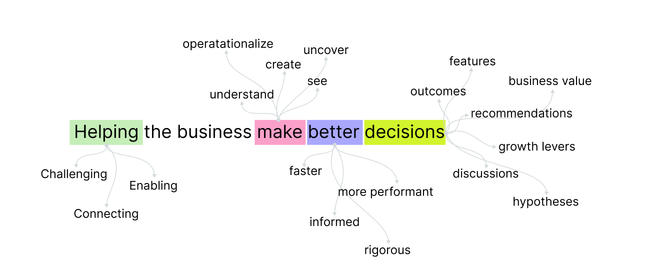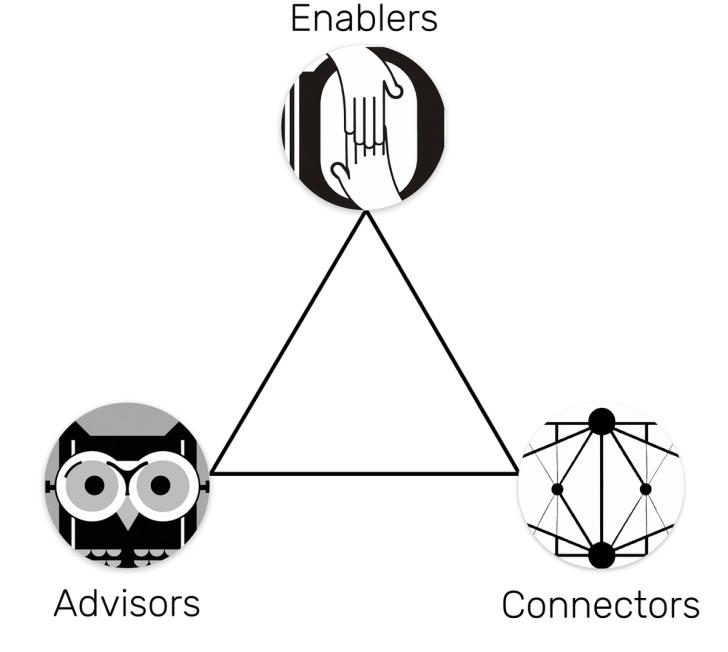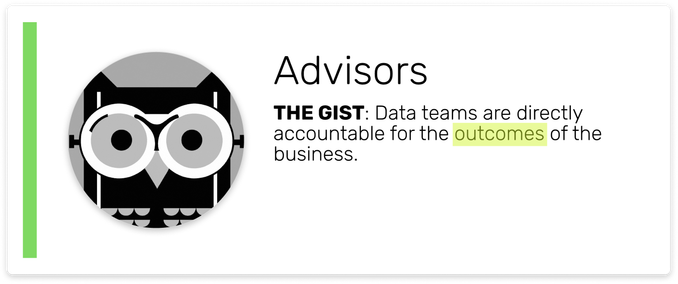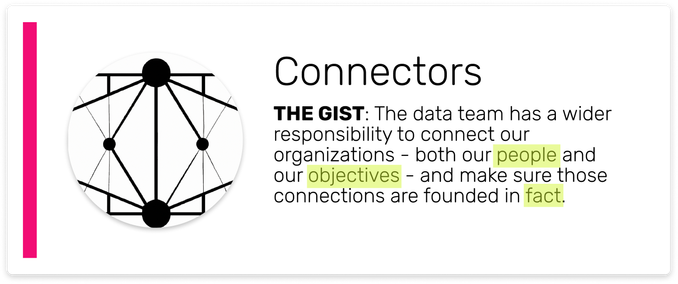What's the real purpose of a data team?
[Quick recap]Over the last few months, I’ve interviewed dozens of thoughtful and experienced data leaders on how they create and manage great data teams. I am now attempting to consolidate their shared wisdom into a collection of articles on everything from leadership, the rise of AI, how they structure and run their data teams, to all the lessons learned along the way.
As we kick off this series, it felt fitting to begin at the highest level -why do we have data teams at all?

Why this question matters
This question might seem superfluous in the face of real day-to-day challenges, so I wondered whether it was worth asking these data leaders at all. However, I found that the answer to this question, more than any other, spoke to the identity of these data teams. What I realized over the course of these interviews is that the purpose of your data team really does manifest in the daily felt experience of being on that team. It affects the structure, the people who get hired, the way you communicate, the work you choose to do and not do, the tools you use, etc.
And so it’s here we must begin. And it’s here I encourage you to begin as well. As you’ll see in the following few paragraphs, your team’s mission or purpose has a way of infiltrating everything you do, so it’s best not to leave it to others to decide for you.
Thanks to
for your help with this post!
Post outline:
- The one thing everyone agreed on
- Three emerging capabilities of data teams
- Enablers
- Advisors and value-generators
- Connectors
- Knowing your purpose
- What’s next?
What everyone agreed on
All data leaders I spoke to agreed to a common mission for data teams:

However, there is a lot of room for interpretation in that sentence.
“The thing we’ve come back to again and again is about helping people make great decisions. I think it’s still true. It’s been true the whole time we’ve been doing this.But what does it really mean?”
-Alan Cruickshank, Insights Director attails.com
As my discussions with these leaders deepened, their answers did too, and this single phrase branched out into many interpretations and directions:

The takeaway from this is that, yes, many of us in data agree it is our mission to help the business make better decisions, but have very different ideas about what that really means, and how we should get it done.
This is the real conversation we need to have.
Where everyone did not agree
What quickly emerged from these conversations was a set of roles a data team must perform:
- Data teams are enablers
- Data teams are advisors and value-generators
- Data teams are connectors

Almost all of the leaders I interviewed mentioned these roles at some point in our discussion, but they differed dramatically on theemphasisof these roles, and it was this variance in emphasis that created large differences in how they run (and measure) their teams.
To best demonstrate these differences, let’s dig into each role a little deeper:
1. Data teams are enablers

“The goal is to actually enable everybody in the company to be able to work with data.”
-Anders Kring, Director of Data at Templafy
A data team that sees themselves as enablers considers data to be a company-wide service team, much like HR or IT. These kinds of comparisons can stir up images of downtrodden data teams, drowning in ad-hoc requests without meaning or purpose.
That is not what this is about.
“I’ve often tried to work out which team [data] is most similar to in the rest of the organization, and the answer I come up with is perhaps unusual, but its our people team. We’re both relatively small teams of professionals who have some technical knowledge, but broadly we’re there to help other people make decisions. We’re not making the decisions for them, we’re helping them make a decision.”
-Alan Cruickshank
While these teams do maintain a service-first philosophy to data, they do not lack purpose or backbone, they simply prioritize creating a solid, reliable data service:
“Do whatever you want in Excel. Go ahead, go nuts, utilize data in whatever tool you’re using in your daily life. You want to explore in Salesforce? Awesome…Do whatever you want to do. Just be sure that once you’ve found what that magic juice is, we take that business logic you put into an Excel spreadsheet somewhere and push it back into the data platform so we keep it governed.”
-Anders Kring
This quote encapsulates a few key traits of teams that put business-enablement first, such as:
- A focus on data quality and governance so that the data available is trustworthy and well-defined wherever it's used
- Encourages flexible self-service
- Usually very centralized and works across the business, not just with one specific team
- Very focused on making sure business users feel comfortable and confident with data, even when they aren’t in the room
- Focused on automation in the data stack (to improve scalability)
- Usually a small team that can’t respond to every request from the business, which is why they push for enabling the business to be more independent
My one additional observation from speaking with Anders, in particular, is that this approach requires strong leadership skills in order for it not to turn into a pure service organization, or avoid an ‘us vs them’ culture. Successful enabler teams are able to stay flexible withdata is used and consumed while being firm about how it is governed, and how it fits into the high-level strategy across all the departments.
2. Data teams are advisors

“The role of the data team is to create business value…It’s not a cost function. It’s something that’s actually there to drive us towards hitting our OKRs.”
-Conor O’Kane, Head of Analytics at Cleo
Many of the leaders I spoke to placed this capability above the rest. The biggest difference between this capability and that of enablement is that this requires data teams to take a far more active role in the decisions being made. The fundamental belief that underpins this is that the data team, and in particular analysts, have an invaluable role in the decision-making process:
“When you’re coming to a decision, you don’t only need the data, you need the insights and wisdom behind that. You also have to set up the decision in the right way. I think this kind of business and critical thinking skills is something very natural for analysts.”
-Triston Cosette, Principal Analyst at GetYourGuide
Perhaps unsurprisingly, these teams tend to operate within a fully embedded or hybrid-embedded model, which closely aligns analysts with specific parts of the business. Under that structure, they are able to look beyond a data request and consider the larger picture. With that oversight, they can take a firmer approach with their business partners:
“Data teams should also act as the sparing partners for the business. We’re not the yes men. We have to be there to curate the business request, to challenge their thoughts and to act as leaders when it comes to operationalizing the data into action.”
-Jimmy Pang, Business Intelligence Lead at Vestaire Collective
“We’re advisory consultants and scientists in that sense. We should be challenging what people say when we think its going against the best interest of the business.”
-Will Mahmood, Head of Data Science at MUBI
The traits of these teams are:
- they operate with embedded or hybrid-embedded models
- actively align their objectives with those of their business partners
- usually work closely with product teams or other revenue-generating teams
- can include a data science team that works closely with product to build models that directly impact revenue
- empower their teams to have an active role in the operations of the business
3. Data teams are connectors

“The more aligned your organization is - and I don’t mean aligned around vision necessarily or strategy, I mean aligned around a common language, a common understanding, and common idea of what is and what isn’t - the more successful an organization is…I think the data team’s responsibility is to ensure those connections are around something objective, like data, as opposed to something subjective, like team goals or team culture.”
-Phillip van Blerk, Director of Data and Analytics at Omnipresent
This final capability may seem more abstract at first, especially compared to the other, more familiar capabilities above. However, each leader I spoke to acknowledged the data team’s role in connecting the organization. This took shape in a few different ways, such as:
- defining and maintaining the key metrics all business teams are accountable for
“For us, being a great team is important, working without silos, this requires a standardised approach to data and metrics, with a shared north star.”
-William Mahmood
- creating and maintaining the company growth model
“When you learn the business there’s often an opportunity to connect the dots between what everyone’s doing in a way that is unique to the data team. These special opportunities can lead to significant business impact.”
-William Mahmood
- being the informal link between several teams in the business
- being the voice of data, reason, and rigor at all times
“That’s the leader bit of data leadership, where you need to get comfortable not just reacting to the culture around you but setting and changing and challenging the conversation around you.”
-Alan Cruickshank
The traits of connector-first teams are:
- usually linked with Finance or C-suite teams
- has an active and experienced leader (influencing culture takes time)
- more business-case focused
Knowing your purpose
By now I hope it's clear that your team's purpose plays a large role in how your team is run, and therefore, it’s critical that you know what yours is:
“You can have that high level objective, but that can be interpreted in a million ways, so you need to have an understanding whether implicitly or explicitly what you own and what you don’t own, what you do and what you don’t do.
-Conor O’Kane
To do that almost requires a whole post itself, but here’s a brief list of questions to ask yourself to help identify (and maybe change) your team’s purpose:
- While we all might do each of these roles to some extent, it is near-impossible to be equally great at all of them. So a first step is evaluating which roles guide your team, and as a consequence, which one(s) you may be unconsciously avoiding. To help understand the tradeoff of roles, you can plot your team on the triangle below:

- How do you think the rest of the business sees you? Map your team on the same diagram. Is that different from how you see yourself? Why?
- How do those roles manifest in your processes, hiring practices, and ownership?
- How do those roles manifest in theexperience of being on your team day-to-day?
- Pick one process (e.g. ad-hoc requests, or prioritization of tasks) that you want to improve. Can you imagine how that might be different if you approached it as an enabler? an advisor? or a connector? How?
And lastly, I’ll leave you with this:
“It’s not just a project we’re doing, it’s a product. A project has a start, a middle, and an end, then the project is done. We will never ever, ever, ever be done. There is absolutely no goal where we will have done enough. I’ve never been in a company that has harvested the entire potential of what the data is capable of doing.”
-Anders Kring
What’s next?
Over the next few months we’ll be rolling out articles on how to measure your data team, the different types of structures and hierarchies, the operating models of data teams, how these teams grew their stack, and much more. So stay tuned!